FROM SITE SELECTION TO DELIVERY PROPERTY DEVELOPMENT MASTERCLASS
PROPERTY DEVELOPMENT MASTERCLASS
Resources
Newsletter
Stay up to date and with the latest news, projects, deals and features.
Subscribe
The final day of Urbanity-25 has delivered big ideas, bold provocations and practical insights.
From the minds behind one of Australia's most anticipated hotels, the Mondrain; to a live AI demo on city-making, the conversations were as energising as they were thought-provoking.
Here are five key takeaways from the day:
Hotels don’t run themselves—hands-on operators win big
Chris Vitale reminded the audience that true returns on hotel investment only come when you’re prepared to stay close to the action. The Mondrian story was a masterclass in grit, risk-taking, and long-game thinking, with food and beverage and residential towers tipping the balance on feasibility.
AI is no longer a ‘what if’ for city-making
Dr Kate Meyrick’s interactive session showed how generative AI can already unpack complex development challenges in real-time. While tools like her ‘Jeffrey bot’ can’t see or feel, they’re fast becoming a must-have partner in problem-solving, revealing blind spots and sparking new ideas.
Urban design must move beyond buildings
Andy Hoyne challenged delegates to rethink city-making by designing with ecosystems—not just real estate—in mind. Showcasing three global projects, he pushed for developments that prioritise environmental balance, long-term sustainability, and genuine community value over short-term profit.
Energy will become a core asset in every development
Geoff Anson warned that developers ignoring local energy generation and storage do so at their peril. With electrification, EV charging demand, and rooftop power set to reshape property economics, embedded energy strategies are no longer optional—they’re the next wealth-creating opportunity in real estate.
Urbanity thrives on connection
From early morning panels to the final sessions, the event showed how the best ideas emerge when developers, designers, policymakers and tech experts come together to test boundaries, share lessons and imagine what’s next for Australian cities.
After a stellar Day One of the conference followed by a night of celebrating the projects and people building our nation at The Urban Developer Awards for Industry Excellence for 2025, Thursday was full of much more.
Read on a for a comprehensive wrap of the day.
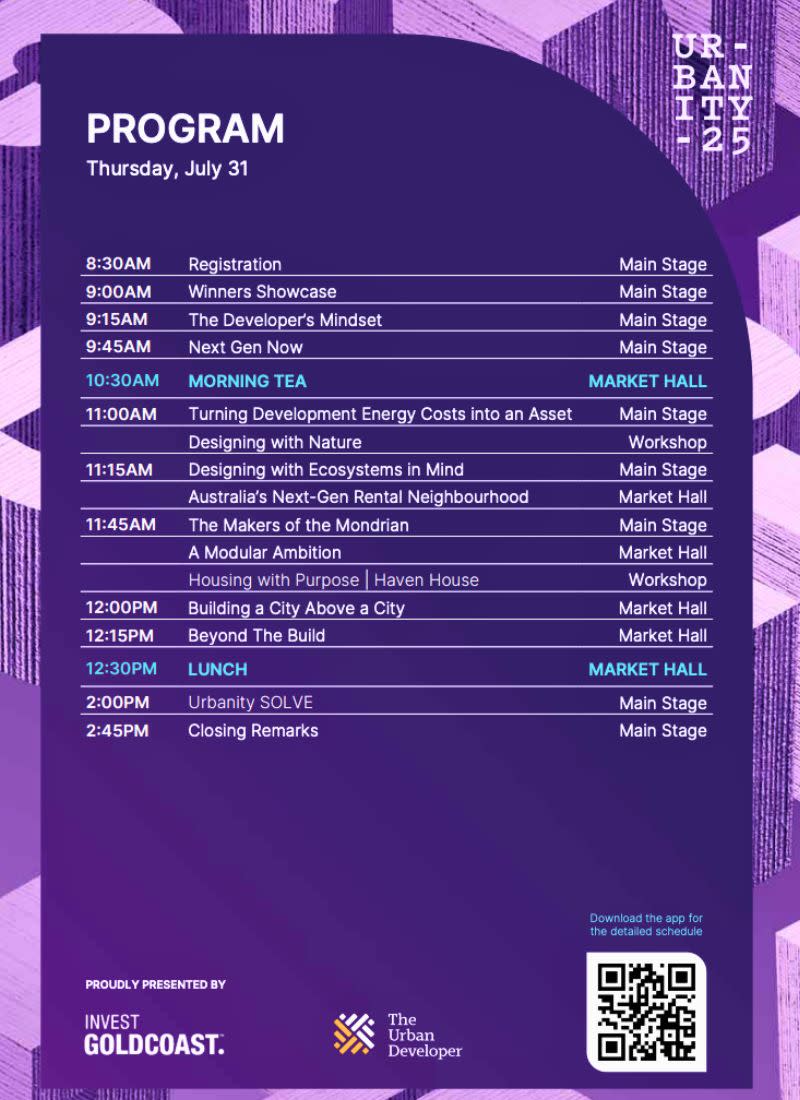
2pm: Urbanity SOLVE: Harnessing the Power of AI to Tackle Big Problems
This afternoon’s interactive session, led by Urbis director Dr Kate Meyrick (pictured at top), invites delegates to roll up their sleeves and dive into one of the most urgent and intriguing conversations of our time: how artificial intelligence can help us tackle the complex challenges of modern city-making.
Using the Urbanity event app to live-vote throughout the session, guests are part of a collaborative experiment in understanding how technology can shape better urban futures.
Dr Meyrick sets the tone: “Insight, curiosity and the courage to explore tools that are now available to us, that’s what today is about.”
She highlights while AI has been written about for nearly 3000 years, many of us still don’t truly understand what it is or what it’s capable of doing.
The session challenges attendees to question their assumptions and consider how AI can unlock solutions that traditional approaches may never reach.
Key takeaways so far:
AI’s true value lies in helping us see problems and potential solutions in entirely new ways.
The conversation isn’t about replacing human decision-making but enhancing it with deeper insights and new perspectives.
Harnessing AI effectively in city-making will require not just technical skills, but imagination and the courage to test the unfamiliar.
Guests are asked: Are you already using generative AI?
Through the live-voting feature, 41 per cent of attendees said yes, 51 per cent said they use it once a week and just 1 per cent admitted to never using it.
Dr Meyrick links these results to global findings showing while 79 per cent of people express concern about AI and 50 per cent say they don’t fully trust it, a striking 73 per cent are already experiencing the benefits of generative AI—often without even realising it.
Dr Meyrick runs a live demonstration showing how developers can use generative AI to explore site issues.
Speaking to her customised ChatGPT bot, Jeffrey, she asks: “What are the competitive advantages, challenges or constraints of this site?”
Jeffrey gives a broad response, and she presses for detail on staging sequenced developments and highlighting risks for the board.
She invites the audience to suggest principles for an exceptional project outcome, and Jeffrey delivers a detailed breakdown of key considerations.
When asked to create a visual, the tool falters.
As Dr Meyrick reminds the room, “Jeffrey can’t see, feel or sense the wind on his face”.
Generic responses are plentiful, but the exercise surfaces some genuinely useful ideas, highlighting both the power and limits of AI in city-making.
11.45am: The Makers of the Mondrian: The design, vision and delivery story behind one of Australia’s most highly anticipated luxury hotels
Today’s late-morning panel brought together the powerhouse team behind one of Australia’s most talked-about luxury hotel projects, the Mondrian on the Gold Coast.
Moderated by The Urban Developer chief executive Adam Di Marco, the session shows how a bold vision became reality, featuring insights from Vitale Property Group directors Chris and Letitia Vitale, Fraser & Partners founder Callum Fraser and Studio Carter founder Robbyn Carter.
Chris (pictured below with Letitia and Callum) offers a refreshingly candid take on the realities of hotel operations.
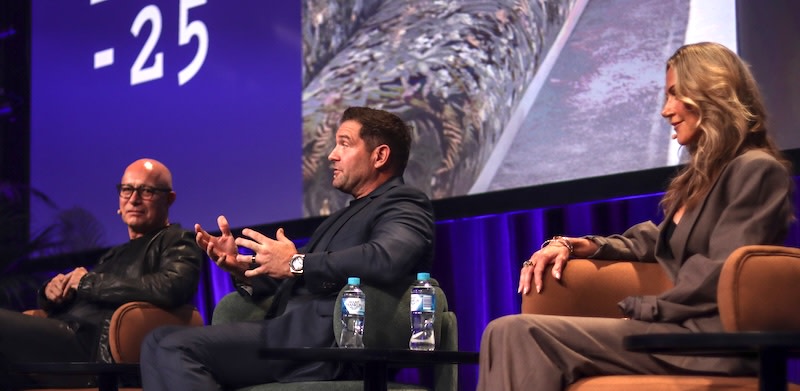
“You may think hotels run themselves, they don’t,” he says, noting the difference between a passive investment and a truly hands-on approach.
With occupancy rates strong and bookings stretching through to January, Chris points out the ongoing challenge of filling rooms midweek on the Gold Coast.
The panel also touches on the unique journey inspiring the project’s concept with Chris recalling a trip to Japan’s ski fields where he saw first-hand the magic of integrated lifestyle destinations.
Returning to Burleigh Heads with the spark of inspiration, the team embarked on a long but rewarding journey to bring the Mondrian to life—a project made viable only because of the opportunity to add a residential tower alongside the hotel.
Robbyn Carter shares how Studio Carter approached the interiors, weaving a sense of effortless sophistication into every corner of the property.
Callum Fraser speaks about design intent and the importance of creating not just a building, but a destination with soul, where both guests and locals can connect with in a genuine way.
11.15am: Rethinking the City: Designing with Ecosystems in Mind
RIOS creative director Andy Lantz (pictured below) pushes back on traditional, real estate-led approaches to city building.
With a background spanning architecture, landscape and urban design, Lantz explores how projects can “let ecosystems thrive” and shift cities from transactional spaces to living systems.
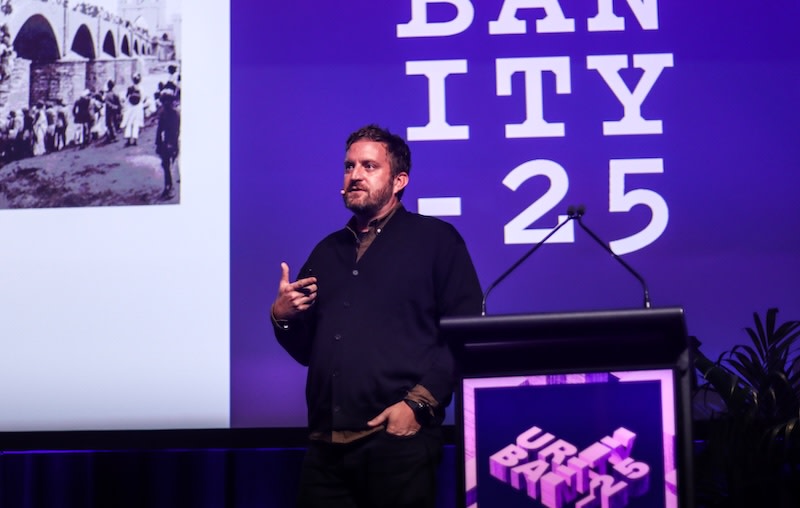
He speaks about a project in Chicago tackling how to reimagine a city block once dominated by 1950s and 1960s surface parking and unlocking its full potential.
Then discusses a historic canal town in China, where vast waterway networks are being reinterpreted for a younger generation returning from megacities to second-tier towns.
Then in Hyderabad, India, his team is confronting centuries of flooding, asking how hydrology can be understood as part of the human ecosystem to deliver better, more resilient development.
“We’re trying to build frameworks where ecosystems can thrive,” he says, challenging the property-first mindset of urban development.
He leaves the room with a provocation: what if cities were measured by the life they sustain, not just the land they sell?
11am: Turning Development Energy Costs into an Asset: How embedded energy strategies are flipping the script on development economics
MicroGrid Power Group chief sales and strategy officer Geoff Anson (pictured below) challenges conventional thinking on energy in property development.
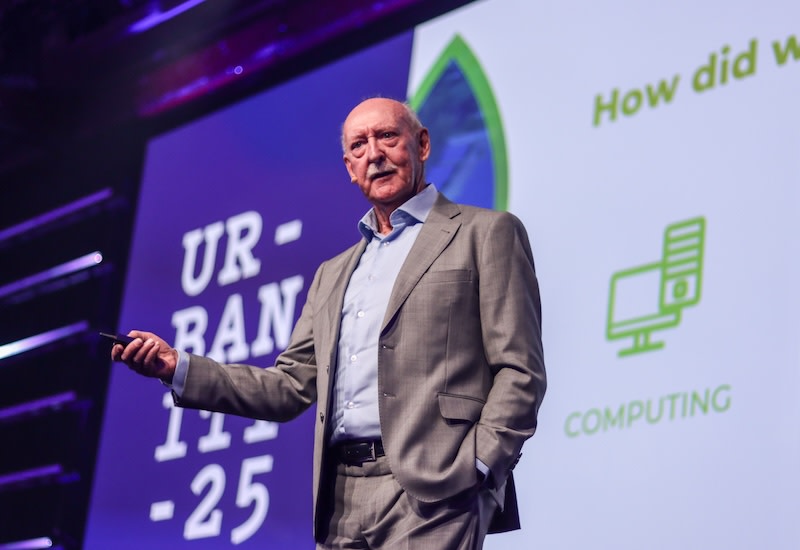
Drawing on decades of experience in tech-led industry shifts, Anson argues energy is on the cusp of a transformation as profound as the personal computer or smartphone revolutions.
He says developers can't afford to ignore the role of local energy generation and storage in modern housing.
“The rooftops of today will be the power stations of tomorrow,” Anson says, urging developers to embed generation and storage capabilities into every new build.
He warns “we are going to be electrifying every building and if we don’t, there will be serious consequences,” from missed emissions targets to stranded assets.
The rise of electric vehicles will reshape demand, with Anson saying “if you don’t have a charging point and you have a build-to-rent property, it’s going to be very difficult to get people to rent your property”.
He framed the shift as a wealth transfer opportunity: “This is the only time where through a democratisation process you as a developer can actually share in the wealth that is created.”
9:45am: Next Gen Now: How Emerging Developers Are Redefining the Game
The next wave of property developers isn’t just building homes, it is reshaping how projects are funded, marketed and sold.
With social media, brand partnerships, and bold strategies redefining the rules these leaders are making their mark fast—and on their own terms.
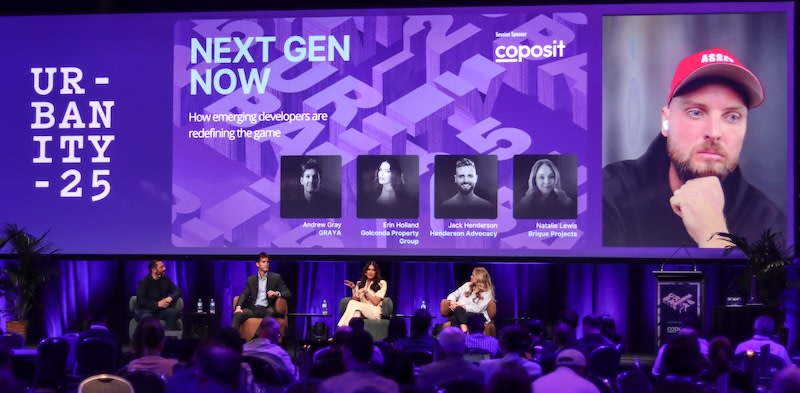
On stage this morning: Golconda Property Group co-founder and director Erin Holland, Graya director Andrew Gray, Henderson Advocacy founder Jack Henderson and Brique Projects founder and managing director Natalie Lewis—sharing how they’re using brand, content and partnerships to power their growth.
Erin Holland (Golconda Property Group): leveraging social media and brand collaborations to secure projects, save costs and amplify exposure in a crowded market.
“Long-term partnerships with consistent posting are far more authentic than someone who posts today and closes up tomorrow.”
Andrew Gray (Graya): harnessing in-house content and strategy to turn Instagram into a direct selling channel for luxury developments.
“Having as much marketing in-house as possible gives us speed and control with projects – it’s worth the investment long term.”
Jack Henderson (Henderson Advocacy) – using raw, unfiltered content and bold, controversial takes to cut through a saturated buyers’ advocacy space.
“The content that resonates the most is raw – filmed on my phone and posted straight to Instagram.”
Natalie Lewis (Brique Projects) – building a high-trust, high-quality brand to engage astute buyers in the $2-million-plus market.
“We make sure the message we put out is the one we want to deliver – we focus on quality over quantity.”
9.15am: Day Two of the event saw three leading voices tackle the growing pressures on housing supply, emerging development opportunities, and how the sector is adapting to a fast-changing market.
Thirdi Group co-founder Ron Dadd, Gallery Group’s Alexandra Stuart-Robertson, and Perifa founder Fabrizio Perilli shared sharp insights on demand drivers, innovative housing models, and the power of strong networks to deliver at scale.
The discussion cut to the core of today’s challenges – labour shortages, soaring build costs, and the push for smarter, more diverse housing. From co-living and terrace homes to post-Olympics infrastructure investment, the panel explored how developers can stay agile while keeping affordability and community needs front and centre.
Main talking points from the session:
SEQ is facing sustained population growth and housing demand, placing pressure on developers to innovate and deliver faster.
Labour and subcontractor shortages continue to shape timelines, costs and competitive advantages in the region.
Co-living and terrace homes are emerging as key solutions to affordability challenges, particularly for younger working Australians.
Long-term opportunities linked to infrastructure growth extend well beyond the 2032 Brisbane Olympics.
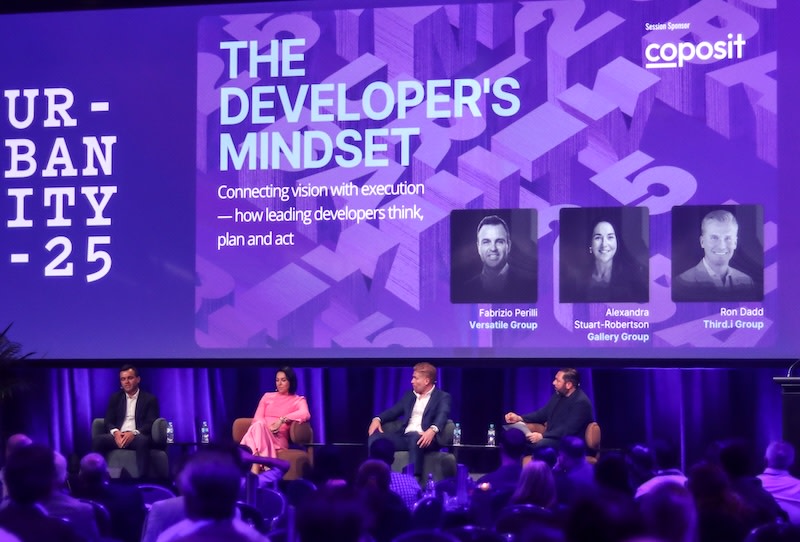
Alexandra Stuart-Robertson – Gallery Group: Tech underpins their “do more with less” approach, with client portals and Salesforce tools giving buyers 24/7, secure access to real-time project updates.
Fabrizio Perilli – Versatile Group: AI offers big efficiency gains but Australia lags behind global markets; success hinges on dedicated teams turning vast data into smarter, faster decision-making.
Ron Dadd – Thirdi Group: New tech simplifies community consultations, making it easier for residents to show support and speeding up approvals.